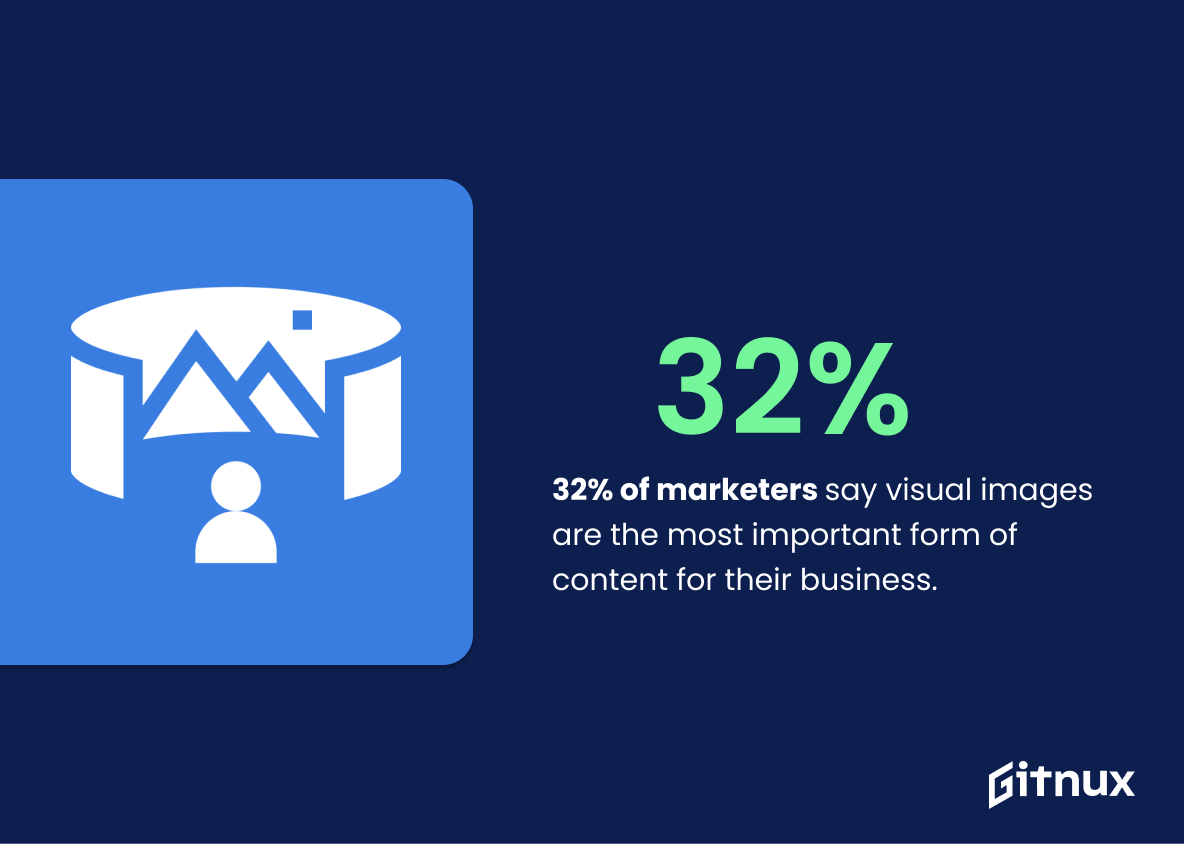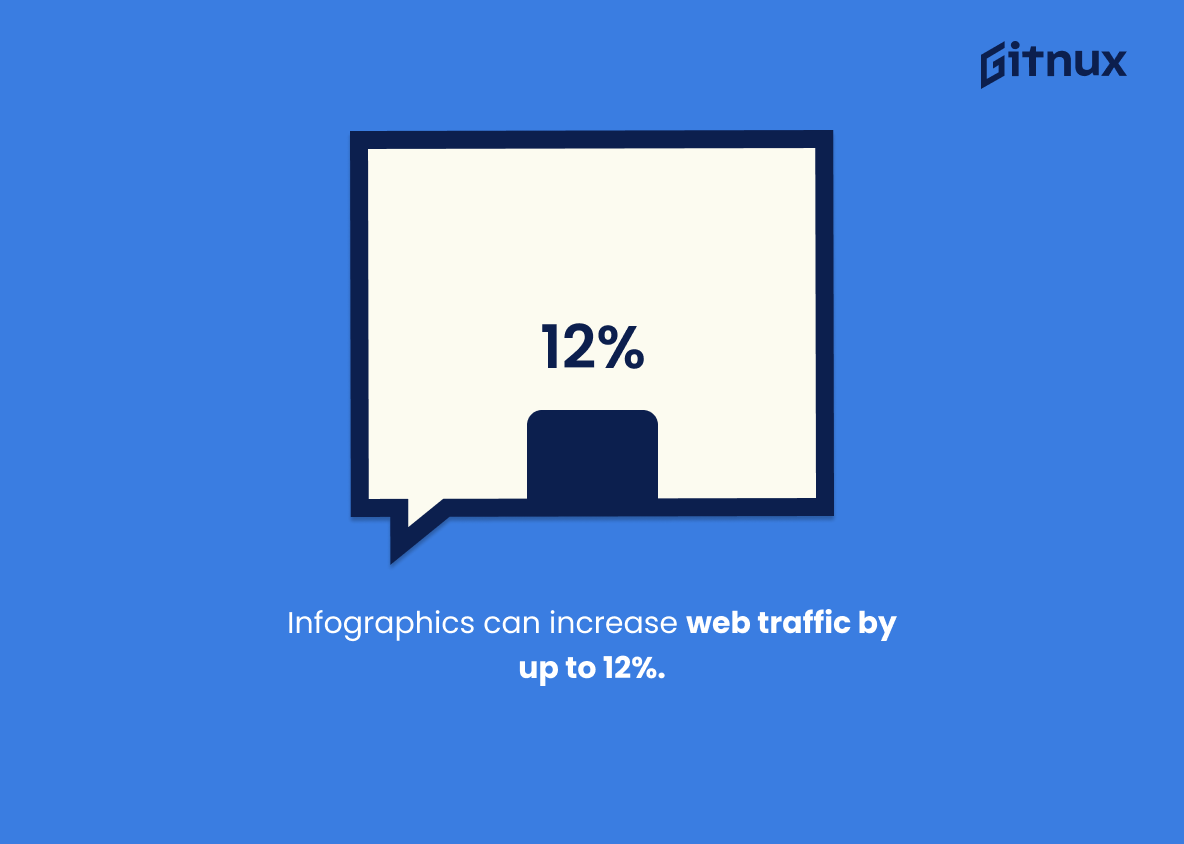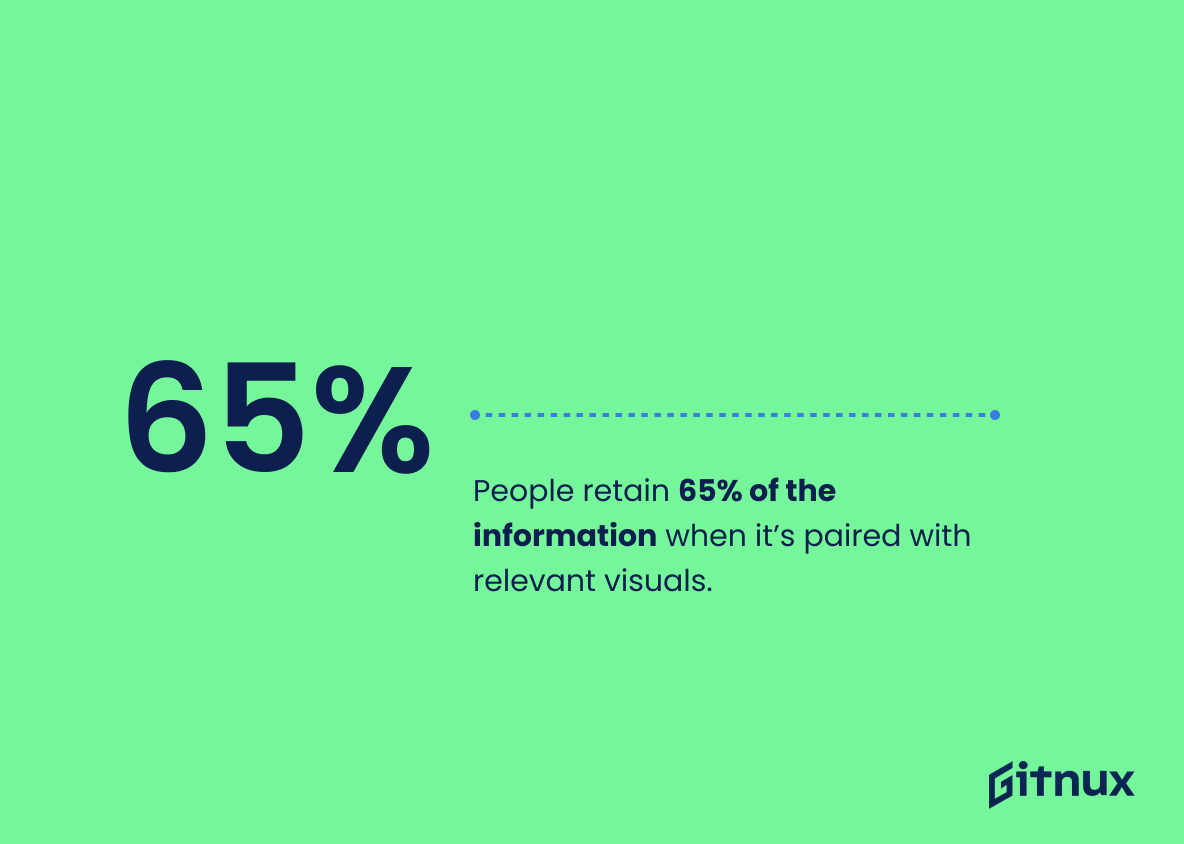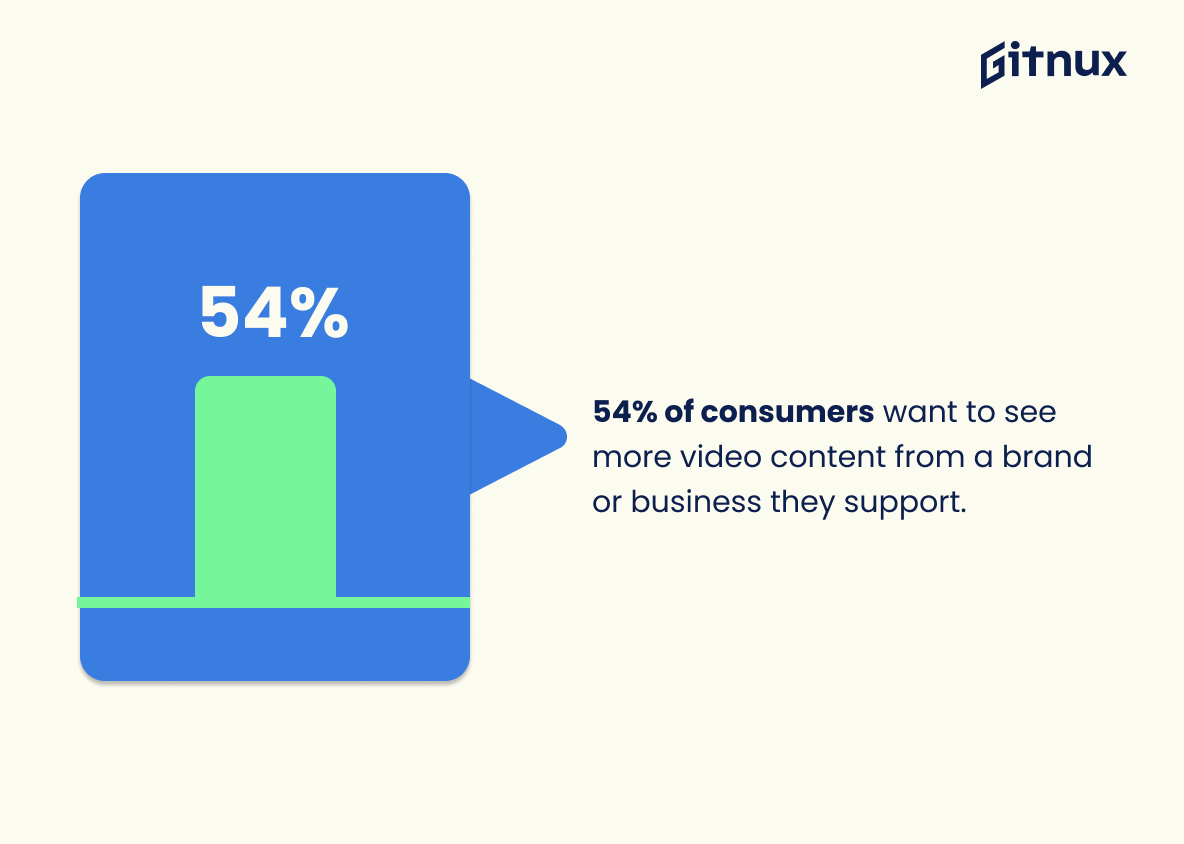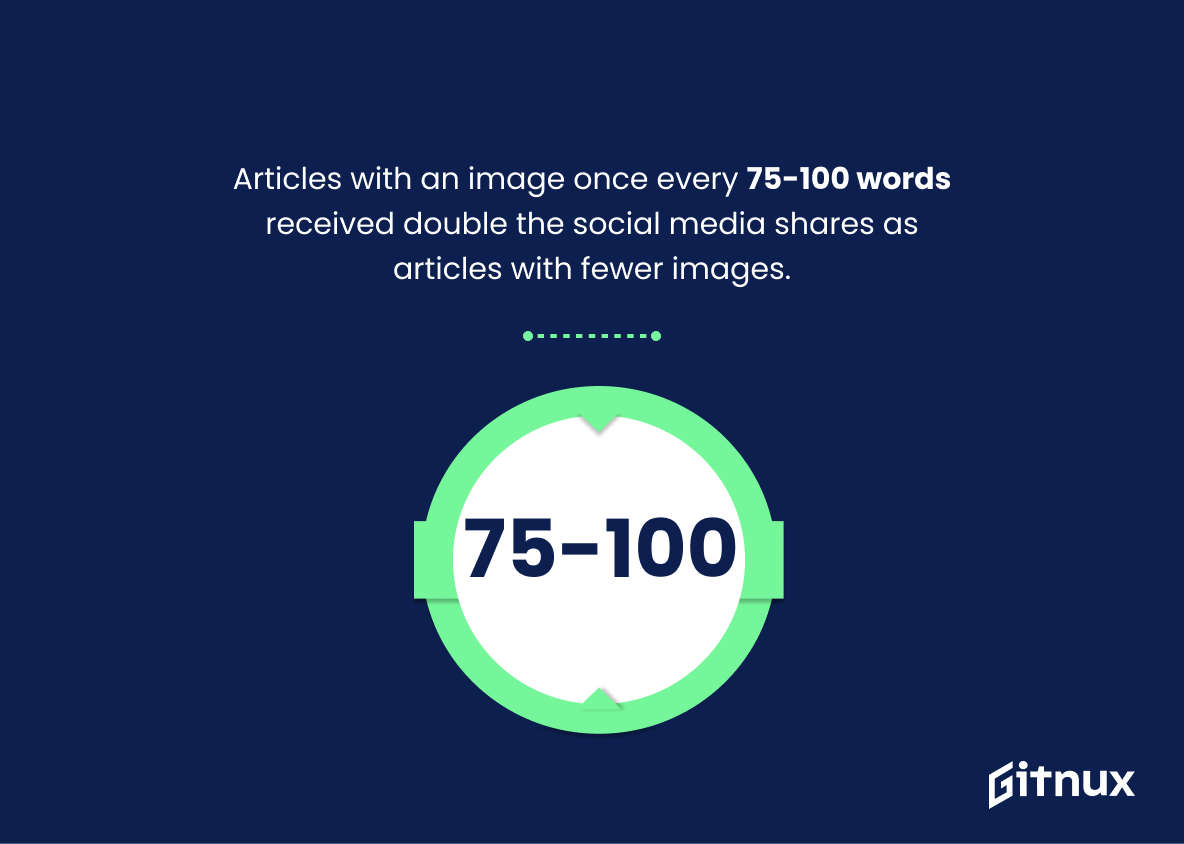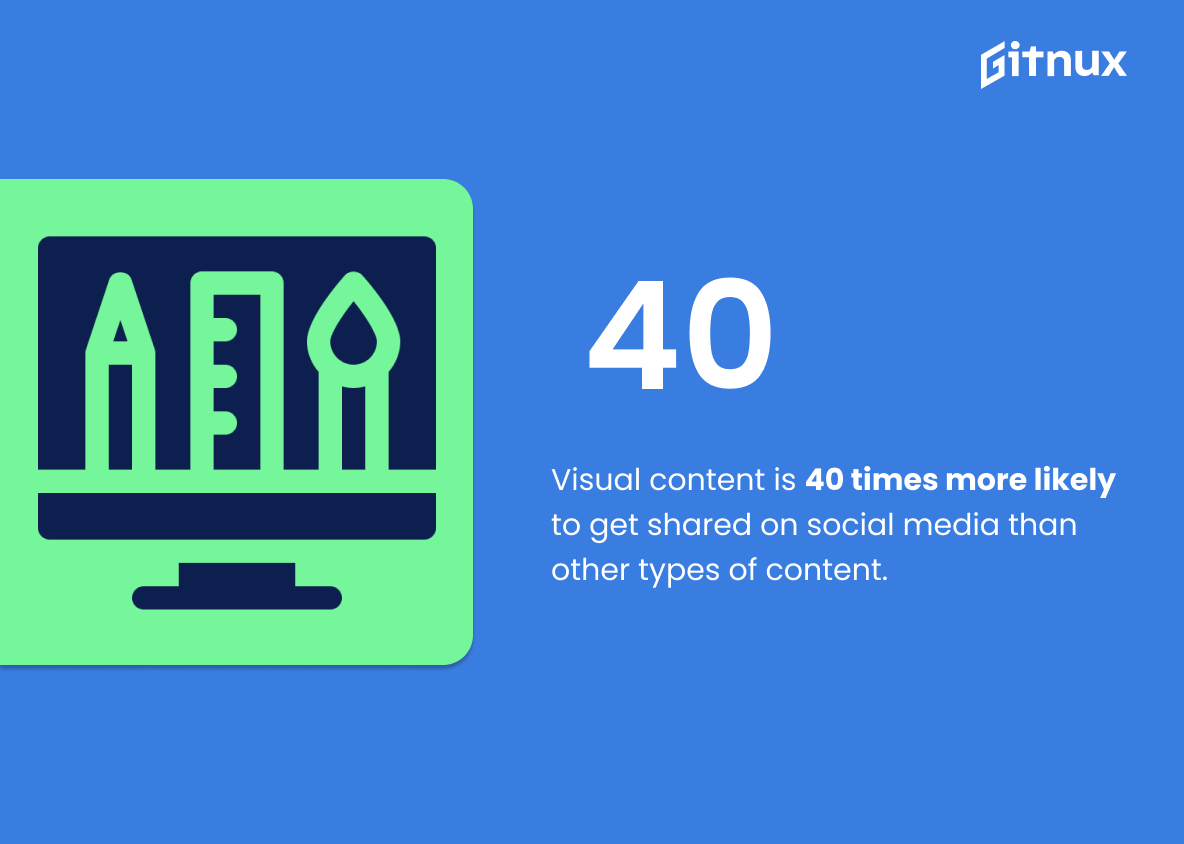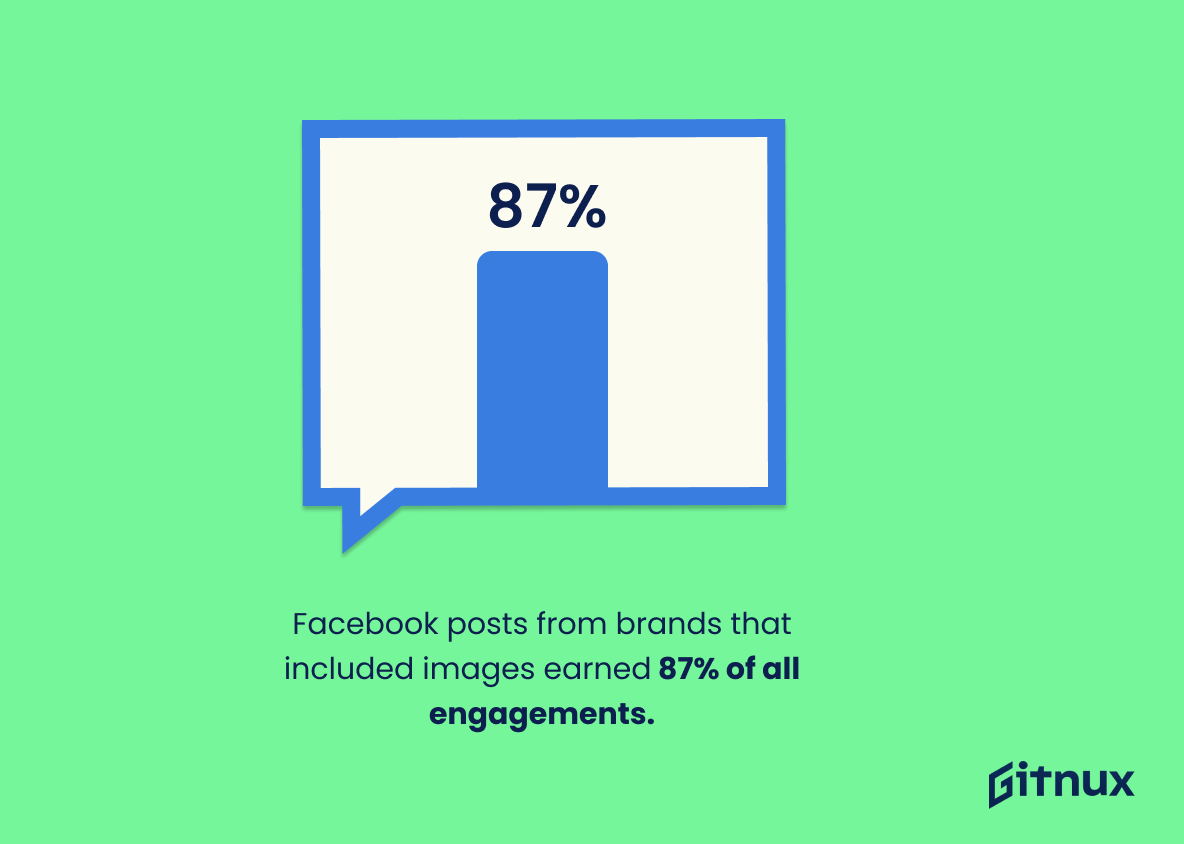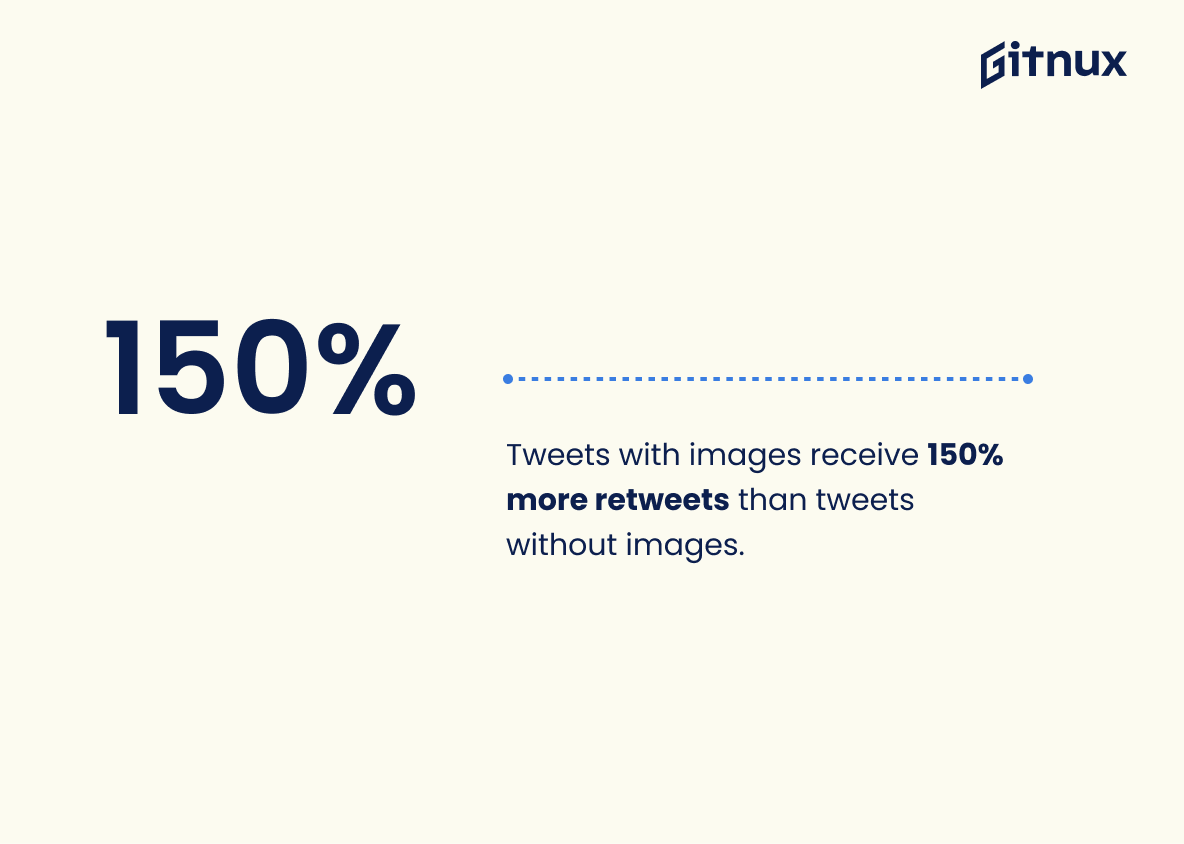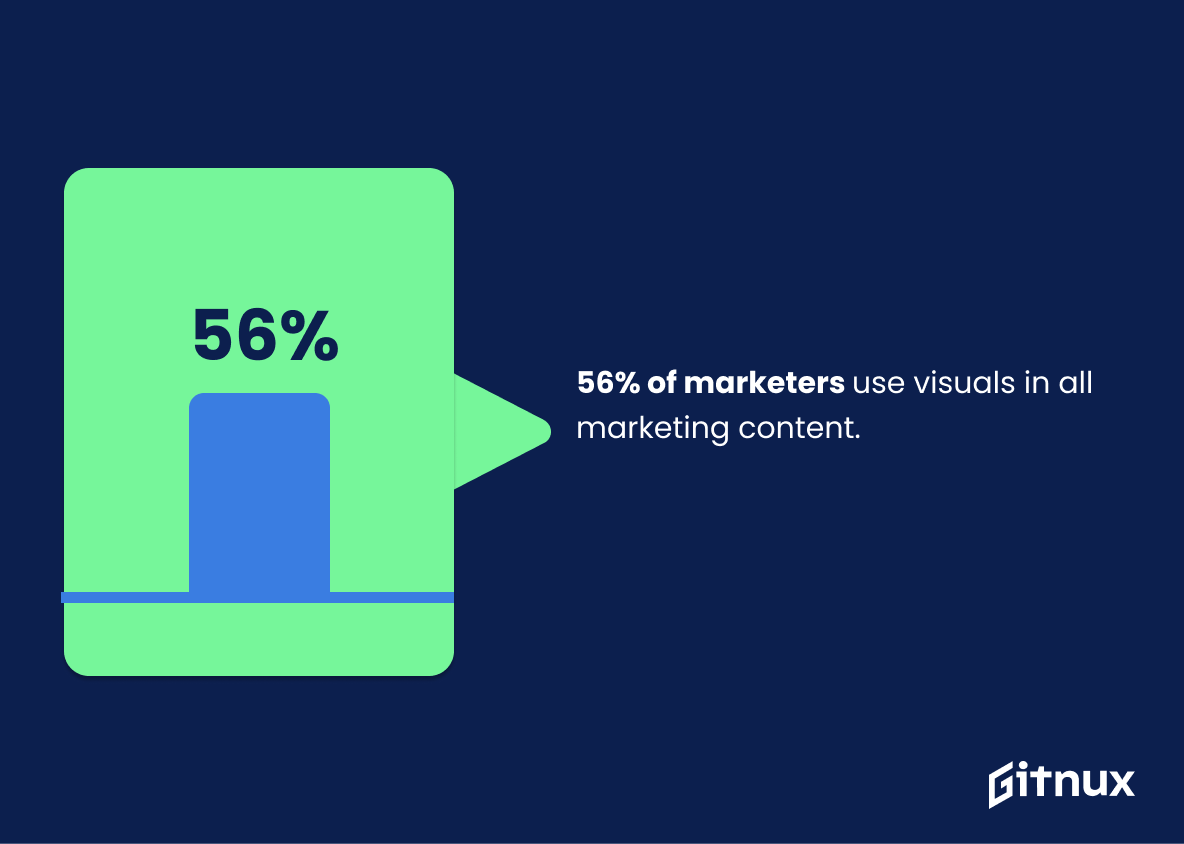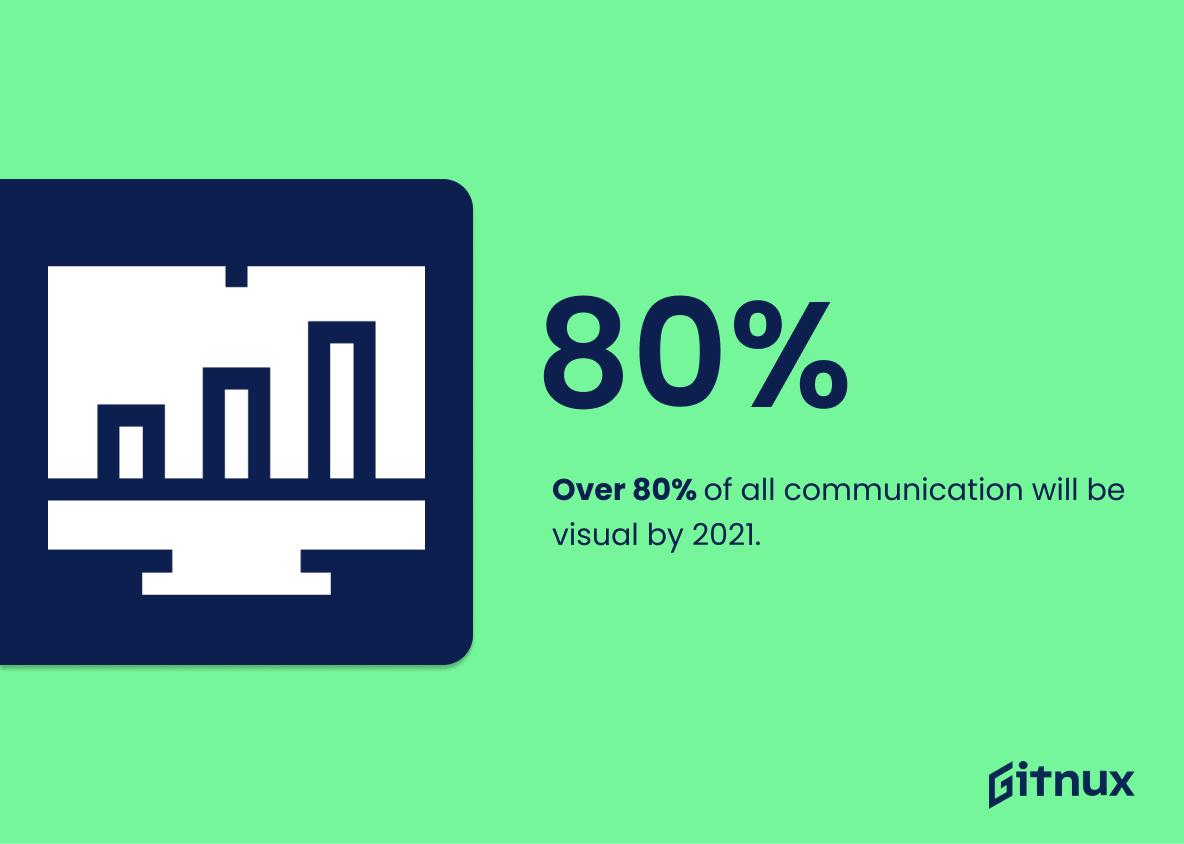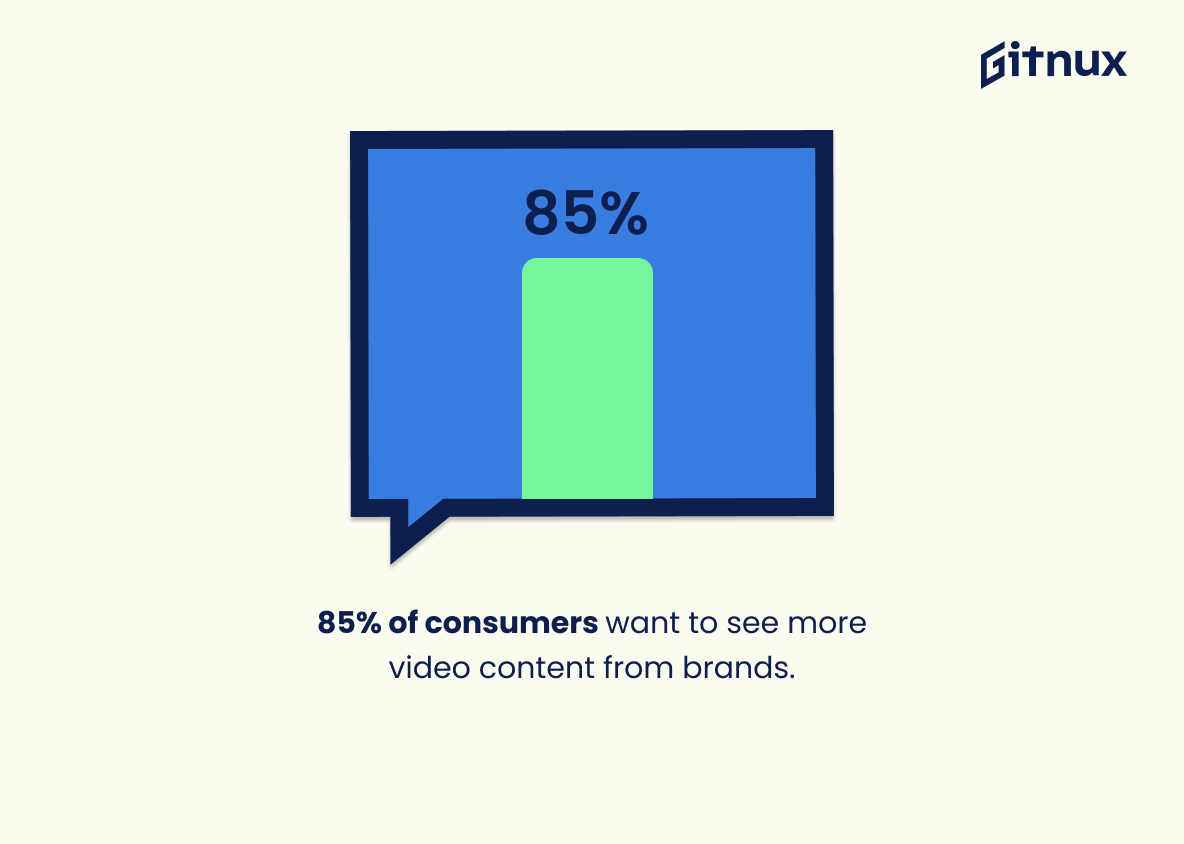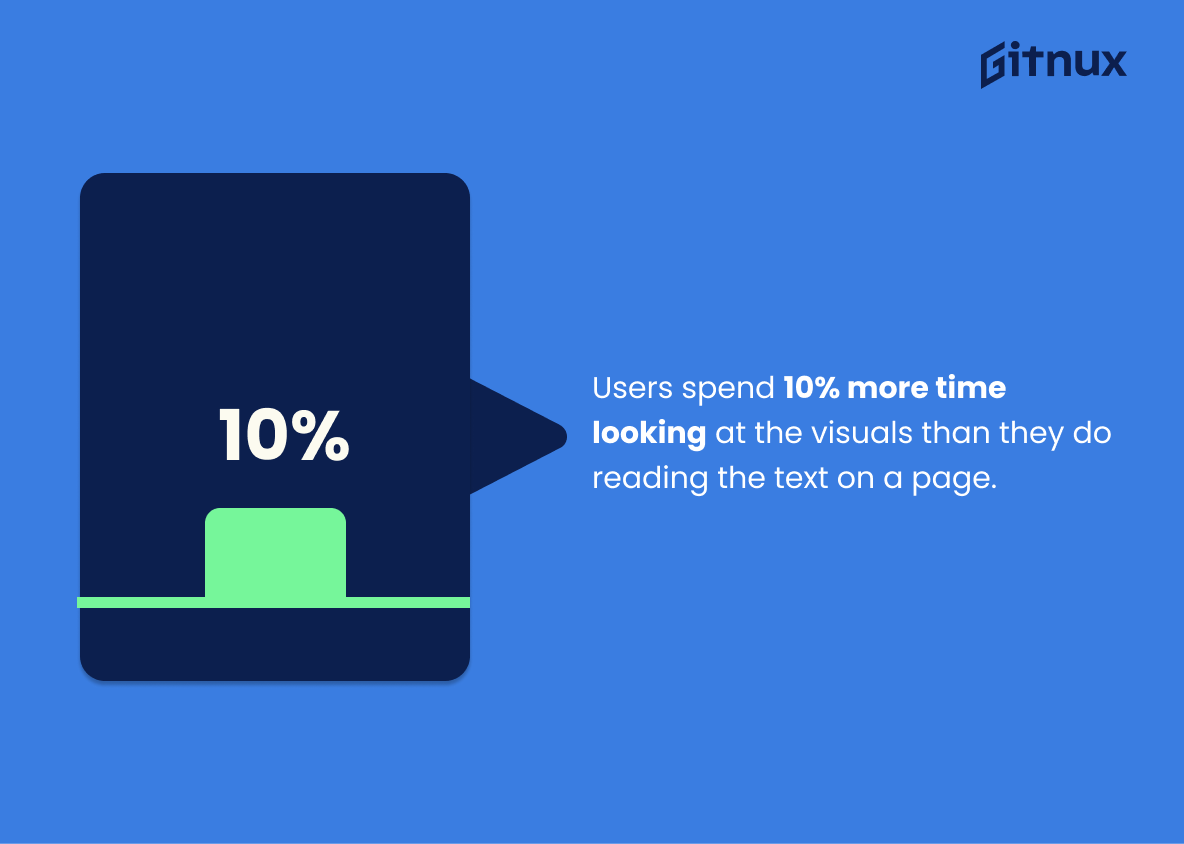In our continuously evolving digital landscape, visual content has solidified its position as the undisputed king of audience engagement. It’s no longer just an element to incorporate; it’s the keystone for effective communication strategy. This blog post dives into the world of visual content statistics, illustrating its overwhelming influence and indispensability in today’s digital marketing strategies.
Whether you are a seasoned marketer aspiring to enhance your campaigns or a burgeoning startup looking to make your mark, understanding these statistics on visual content can unlock the pathway to unprecedented engagement, virality, and conversions. Let’s unravel these numbers and explore how and why visual content rules the roost.
The Latest Visual Content Statistics Unveiled
32% of marketers say visual images are the most important form of content for their business.
In the dynamic sphere of visual content statistics, the figure ‘32% of marketers rank visual images as paramount for their business’ is a resounding affirmation of its significance. This numeric evidence shines a spotlight on the fact that almost one-third of marketers appreciate the leverage they gain when utilizing visual images.
In drafting a blog post about Visual Content Statistics, this valued component provides an empirical backbone, demonstrating that not only does visual content play a game-changing role but it also has a compelling impact on businesses. This aligns with the notion that ‘A picture is worth a thousand words’- delivering intricate messages succinctly and engagingly. Thus, imagine more than 30 out of 100 professionals embracing visual imagery as their business’s lifeline, a testament to their expansive power to shape marketing strategies.
Infographics can increase web traffic by up to 12%.
Imagine sailing the vast ocean of the web in search of valuable information, only to be overwhelmed by a deluge of text-based content. Infographics, the shining lighthouse in this sea, guide readers towards understanding complex information quickly and clearly. They are not just random images; they are pivotal storytelling tools that can stir the reader’s interest and encourage user engagement.
In a blog post about Visual Content Statistics, the statistic ‘Infographics can increase web traffic by up to 12%’ serves as a compass directing bloggers and website owners towards a trove of benefits. It emphasizes the potency of infographics as a catalyst for web traffic growth. Driven by the human brain’s natural preference for visual content, incorporating infographics into a site could create a decisive edge in capturing attention, creating understanding and ultimately driving reader engagement on a higher level.
But that’s not all, this statistic also provides a numerical testament to the power of visually engaging content. It is the inkling of a promise that integrating infographics could see a reward of a 12% boost in web traffic, a substantial potential uplift in the coveted customer engagement and search engine rankings. So, let this revelation inspire you to helm your content strategy towards more infographics, where the potential growth in web traffic awaits.
People retain 65% of the information when it’s paired with relevant visuals.
In the blogosphere where content is king, this intriguing statistic is the scepter that rules. Imagine the potency of your communication when people retain 65% of the information adorned with relevant visuals. This concept breathes life into the argument that visuals should not just be mere decorations but critical elements within your storytelling. The infusion of pertinent graphics generates a visual memory footprint, reinforcing the absorption and retention of information, arguably a truly transformative piece in the jigsaw puzzle of effective and engaging visual content strategies.
54% of consumers want to see more video content from a brand or business they support.
Diving beneath the sea of statistics, it doesn’t take long before we encounter this gem: 54% of consumers crave a more visual feast from the brands or businesses they back. Now, why is this particular pearl in the ocean of numbers so striking?
In a realm where visual content reigns supreme, this stat confirm a fundamental truth: consumers aren’t just passive spectators. They actively desire to interact with brands via video content, seeking to experience the brands they support beyond static images and text.
In a blog post centered on visual content statistics, this figure is a strong banner waved high. It insinuates that incorporating video content isn’t just a passing trend or a frivolous addition; rather, it’s an absolute necessity to meet the current consumer demands.
So, for brands fishing for more engagement, let’s cast a wider net with more video content. After all, in the grand gallery of business strategies, video content appears to be the masterpiece that 54% of consumers want to admire. Ergo, it’s not rocket science to wager that an investment in video content might just be the breakthrough brands are looking for.
Articles with an image once every 75-100 words received double the social media shares as articles with fewer images.
Highlighting the potent influence of visual content, the statistic stands as compelling testament to the undeniable allure of images in augmenting audience engagement. Remarkably, articles laden with an image every 75-100 words have proven to effectively double their social media shares, outshining those furnished with fewer images.
This striking phenomenon is a crucial insight for anyone delving into a blog post about Visual Content Statistics, as it profoundly underscores the pivotal role played by visual content not only in grabbing reader’s attention, but also in fuelling their interest to share the content, thereby enhancing its reach and impact.
Visual content is 40 times more likely to get shared on social media than other types of content.
Unveiling the power of visual content, consider this – it possesses the incredible capacity to become viral 40 times more than its textual or other content counterparts on social media platforms. In the whirlpool of the blogosphere, where the battle for attention is fierce, such a statistic is a game-changer. It offers a vibrant palette of insights for bloggers, digital marketers, and content creators.
It punctuates the criticality of incorporating visually captivating elements into your posts, as they are an irrefutable magnet for shares and engagement. So, dance with this statistic in your strategy and create a symphony of blog posts bursting with eye-catching visuals, promising to travel farther and faster into the labyrinth of social media.
Facebook posts from brands that included images earned 87% of all engagements.
Diving into the heart of visual content statistics, we unearth a gem that illuminates the significance of visuals in digital marketing. Behold, Facebook posts from brands adorned with images are responsible for accruing a staggering 87% of all engagements. This striking nugget of data is far from trivial, it underscores the captivating allure images hold over audiences. Brand posts embedded with visuals on the social media platform stand out, grasp the user’s eye, and have a better chance of attracting their interaction.
To put it plainly, images are akin to powerful magnets that draw the engagement of around nine-tenths of the audience. Therefore, crafting Facebook posts without incorporating images is like casting your net into the digital sea and expecting a wholesome catch without using the right bait. Without a doubt, unlocking the potential of visual content could be the golden key for brands to maximize their audience engagements.
Tweets with images receive 150% more retweets than tweets without images.
In the captivating realm of visual content statistics, one shimmering gem stands out – tweets harnessing the power of images muster a grand 150% more retweets compared to their image-less counterparts. This statistic paints a vibrant image of the supreme influence that visuals hold in the Twitterverse, providing invaluable insight for anyone blogging about visual content.
It is, indeed, a clarion call to not merely inform or entertain, but rather to captivate and engage by amplifying the magnetic force of visuals. This isn’t just a fun fact, rather it’s a potent weapon for digital marketers, social media strategists, or anyone seeking to establish a notable presence in the dizzying world of 280 characters.
56% of marketers use visuals in all marketing content.
In the labyrinth of marketing, numbers become the lantern that illuminate the path towards effective strategy. Take for instance the statistic that reveals that over half of marketers, precisely 56%, infuse all their marketing content with visuals. This has a profound implication on the discourse surrounding visual content statistics. It offers an insight into the importance of visual elements in grabbing attention, enhancing comprehension, and bolstering retention.
This figure not only underscores the prevailing trend, but also subtly nudges future marketers to embark on the visual-centric journey. Hence, in the grand tapestry of a blog post dissecting Visual Content Statistics, this 56% is not just a mere number, but a potent stroke colouring the broader picture of visual marketing trends and their impact.
Infographics are liked and shared on social media 3x more than other any other type of content.
Diving into the heart of visual content statistics, this intriguing fact about infographics holds immense sway over the digital landscape. It’s like finding a golden goose in the realm of content creation and audience engagement. Picture this – in the ever-competitive arena of social media, your info-packed infographic doesn’t just enjoy a fleeting glance, but it is liked and shared a whopping three times more than any other content type.
As a blogger, it’s like discovering a secret power. A power that you can yield to significantly boost your blog’s visibility, engagement and potentially, its overall success. This statistic acts as an insightful compass, guiding you to invest in infographics to enliven your storytelling and connect with your audience in a more impactful way.
Over 80% of all communication will be visual by 2021.
Imagining a world awash with visuals paints a pretty accurate forecast of our digital landscape for 2021. The projection that over 80% of all communication is going to be visual holds a spectrum of implications for anyone penning a blog post about Visual Content Statistics.
Coloring between the lines adds depth to the fact that our digital ecosystem is no longer drowning in heavy texts but floating buoyantly on a sea of visuals. Icons, emojis, GIFs, infographics, videos – our newfound language channels the innate human inclination toward visual stimuli.
Constructing the visual content statistic as a cornerstone of your blog post points to a telling truth that resonates with diverse audiences. Reinforcing the power and persuasive ability of visual content, it clarifies how, as information consumption patterns evolve, those peppy images and catchy videos are potentially the new alphabet of communication. This paramount shift in communication trends is your blog’s clarion call to marketers, content creators, educators, individuals, and enterprises to acknowledge and exploit the compelling charm of the visual content cosmos.
85% of consumers want to see more video content from brands.
Delving into the realm of Visual Content Statistics, the curiously high percentage of 85% wanting to see more video content from brands underscores an invigorating revelation. This numerical insight whispers about the emerging trend for video content, portraying it as the new king of digital castle.
It dramatically unhinges the view that printed or text based information alone can capture consumers’ attention. In the arena of visual content, it vouches the voracious appetite of consumers for video, which brands must heed. Stated simply, this 85% is not just a statistic, it’s a loud and clear consumer vote for brands to pivot towards video content.
53% of the most engaging posts on Instagram contain images.
Illuminate upon the importance of visual content, the intoxicating influence of a single photograph can’t be overlooked given that 53% of the most engaged posts on Instagram are permeated with images.
As one explores the vast landscape of visual content statistics, this particular percentage screams out a siren call to marketers and content creators alike. It states eloquently that while words can create a beautiful narrative, it’s images that snatch instantaneous engagement, magnetically drawing the eye and transforming casual browsers into captivated audience members on platforms like Instagram. From this perspective, the potency of visual content may elevate an ordinary blog post to a magnet of user engagement.
Users spend 10% more time looking at the visuals than they do reading the text on a page.
This captivating insight underscores the magnetic pull of visual content, spotlighting its crucial role in capturing consumer attention. Dive deeper, and one uncovers a powerful narrative – in the bustling landscape of online content, visuals triumph, snaring users for longer periods compared to text-based material.
Translating this to a blog post about Visual Content Statistics articulates an actionable strategy for creators, a guiding beacon signaling that investing more time and resources into crafting compelling visuals can yield higher user engagement, thereby making blogs visually tastier treats for reader consumption. This statistic is a key ingredient in baking the success recipe for any blog – a testament to the age-old saying, a picture indeed is worth a thousand words.
Conclusion
In a digital age where information is consumed in seconds via scrolling or swiping, it’s more important than ever to embrace visual content. Data consistently indicates that visual content significantly outperforms text-only content in terms of engagement, shares, and overall audience response. Whether it’s infographics, videos, images, or interactive elements, integrating visual content into your strategy can significantly boost your online presence, engagement and conversion rates.
But remember, it’s not just about adding visuals—ensuring quality, relevance, and creativity also play vital roles. Therefore, to stay ahead in this fast-paced, visually-driven digital environment, invest time in understanding and utilizing visual content. Your audience will not only appreciate it but will be more likely to connect with your brand, enhancing your digital footprint and driving your growth and success.
References
0. – https://www.go.bloomberg.com
1. – https://www.www.brainrules.net
2. – https://www.www.nngroup.com
3. – https://www.www.hubspot.com
4. – https://www.www.socialinsider.io
5. – https://www.www.buzzsumo.com
6. – https://www.www.impactplus.com
7. – https://www.www.socialbakers.com
8. – https://www.blog.hubspot.com
9. – https://www.blog.bufferapp.com
10. – https://www.venngage.com
11. – https://www.neomam.com
12. – https://www.contentmarketinginstitute.com
13. – https://www.animoto.com
